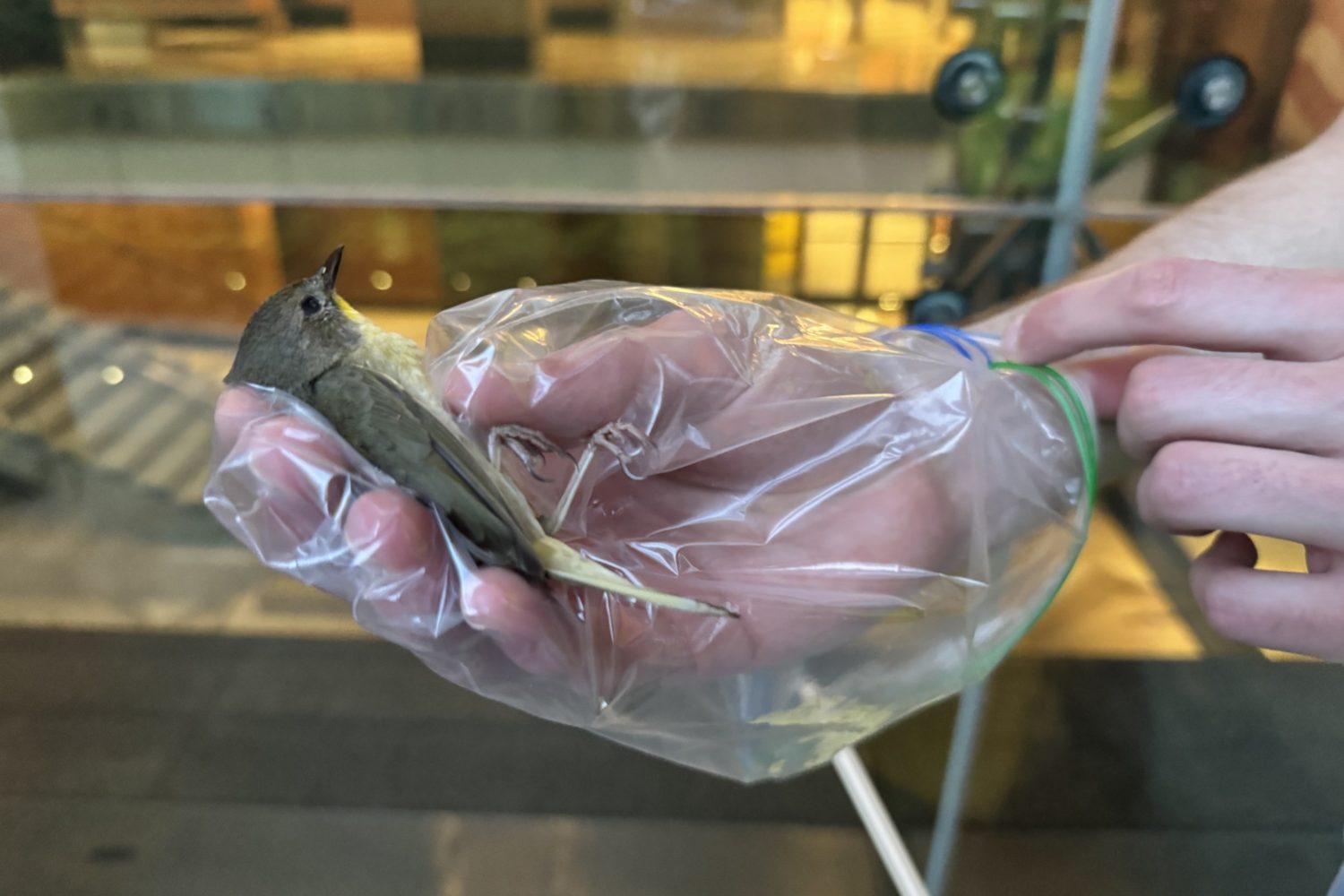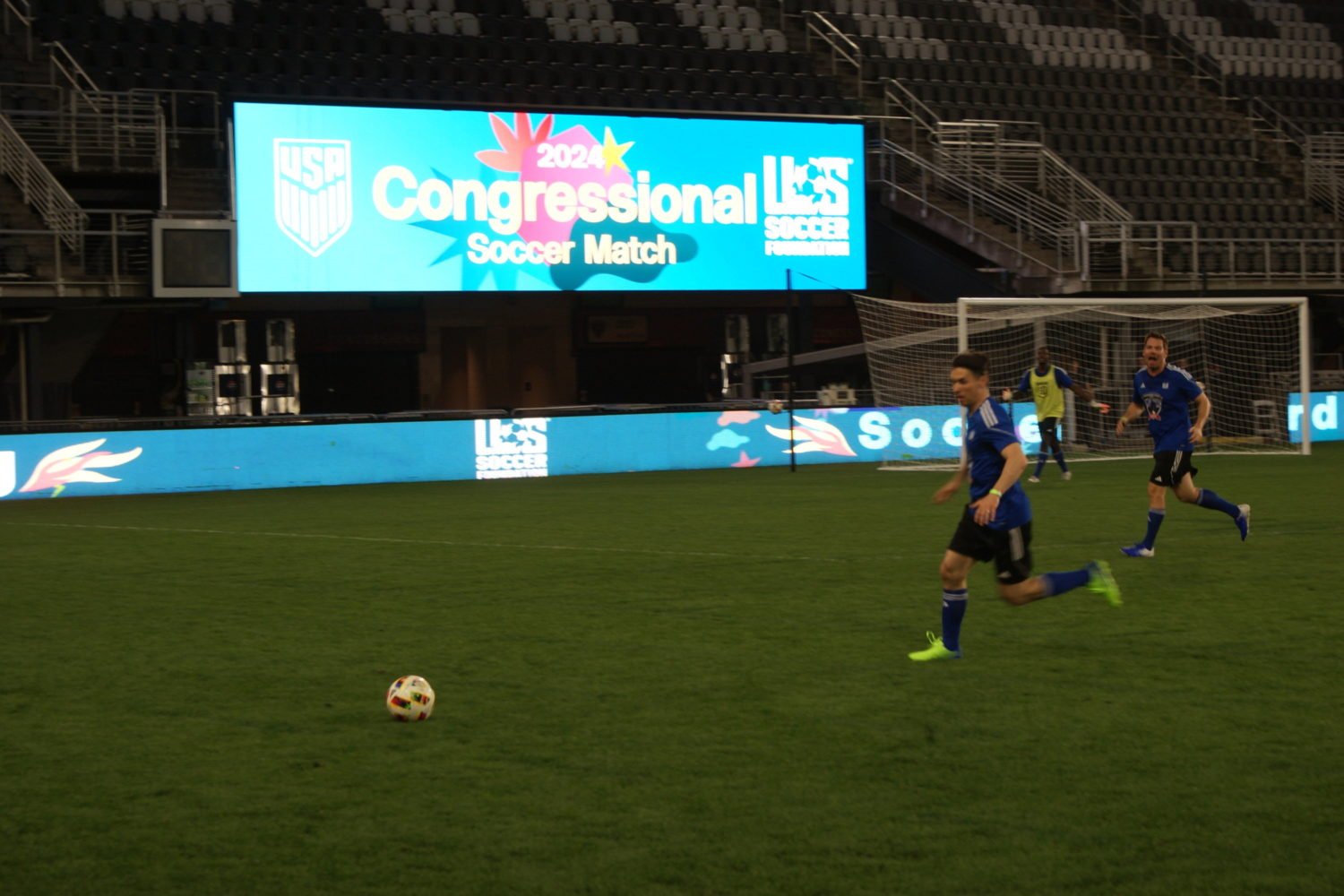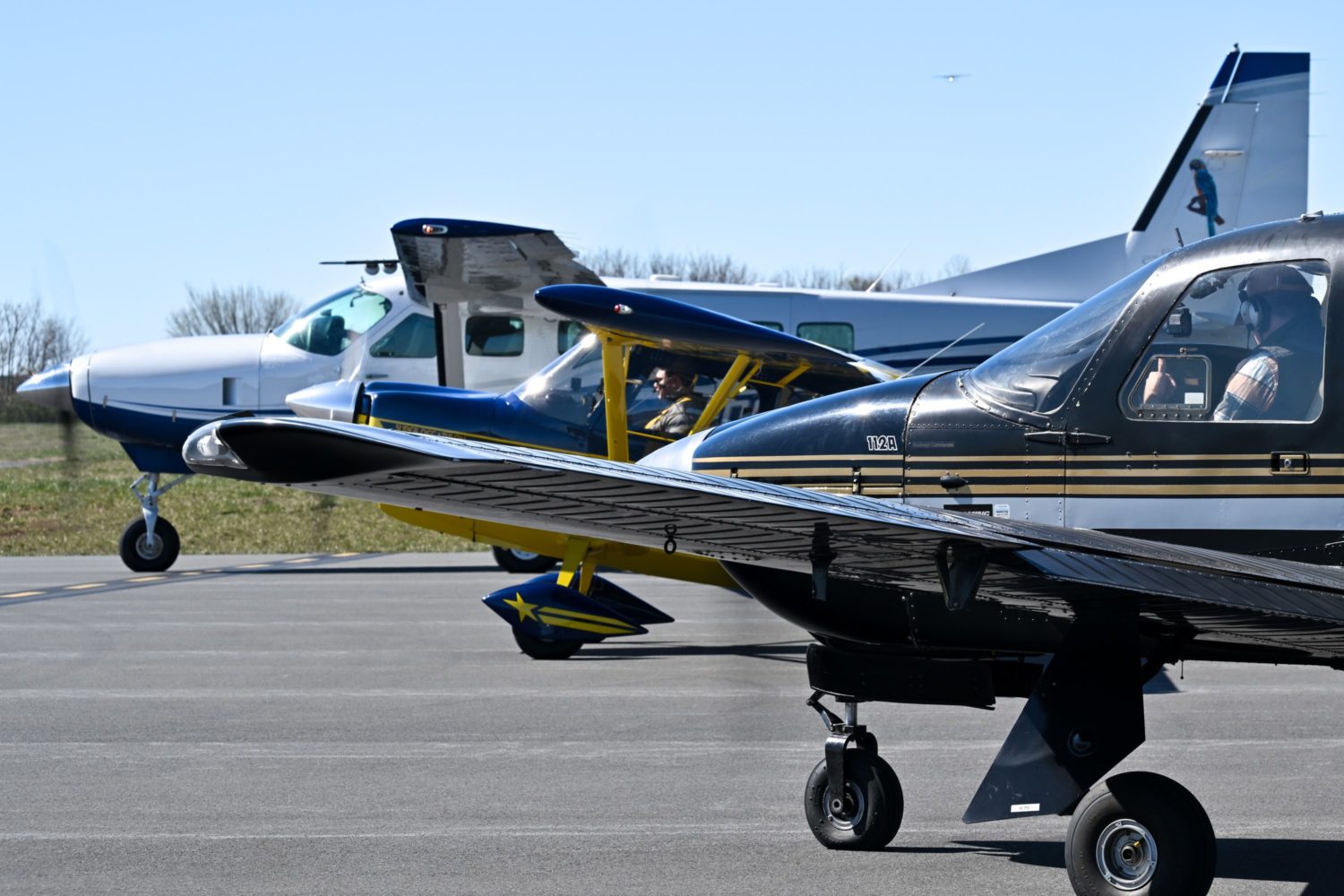Maretha Brown didn't have to die. Louis Lanel Callands, the cabbie who killed the 90-year-old great-great-grandmother after a dispute over a tip, should have been pulled off the road.
When Brown and her daughter Ina hailed Globe Cab No. 28 outside the Kaiser Permanente Medical Center on North Capitol Street in November 2002, they had no way of knowing that Callands was an alcoholic whose drinking had caused a type of nerve damage, peripheral neuropathy, that would have prevented him from getting a commercial driver's license. They couldn't have known that the DMV had suspended his driver's license three times in five years, including once when he was stopped for drinking and driving.
The ride was uneventful until the Browns arrived at their apartment complex in Northeast DC and refused to give Callands a tip. Callands flung some change at the women and drove to the end of their parking lot.
Once there, witnesses say, he pointed his cab toward them, revved the engine, and hit the gas. The cab raced across the road, jumped over the curb, and tore through 80 feet of grass before it hit the two women.
Maretha died.
Callands claimed at first that his brakes had failed, then that his gas pedal had gotten stuck. But investigators didn't find any mechanical problems with the car. They charged him with voluntary manslaughter after smelling alcohol on his breath. Tests conducted three hours after the crash showed Callands had a blood-alcohol content of 0.11, above the legal limit of 0.08.
Callands, 64, had been on the road because no one at the DC Taxicab Commission appears to have challenged his claims that he didn't drink alcohol or questioned statements by his physician that Callands showed no signs of alcohol abuse.
"He walked very slowly, he used a cane. . . he was very thin and he looked older than his chronological age," says a prosecutor familiar with the case. "He looked like an alcoholic to me."
Callands pleaded guilty to second-degree murder and was sentenced to 12 years in federal prison.
The Callands case brings to life the problems of a system that allows thousands of cabbies to roam DC streets without any meaningful oversight.
Most drivers work long hours for low pay. They provide an essential yet underappreciated service to the nation's capital. But some cabbies prey on passengers.
Over six months, in interviews and independent testing, The Washingtonian discovered many cases in which cabbies overcharged, endangered, or mistreated passengers. We discovered shoddy record keeping and lax oversight as well as reports of corruption and misconduct at the agency that oversees taxis, limos, tour buses, and private ambulances. In tests, we discovered that riders were being overcharged 41 percent of the time. In reviewing records obtained under the Freedom of Information Act, we learned just how little DC was doing to prevent taxicab abuse.
AMONG THE FINDINGS:
• A majority of DC's taxicabs fail the required safety and emissions inspections.
• Passenger complaints are often ignored, and those that result in a judgment against the driver are rarely enforced.
• Convicted criminals are getting licenses to drive cabs.
How did the District's taxi system get this way?
In 1998, the former head of the taxicab office was convicted of selling hack licenses to people who didn't pass the required tests or meet the standards to become a cab driver. More than a dozen other city employees were charged with selling phony inspection stickers to cabbies whose vehicles didn't meet city standards. In 2000, a hack inspector was caught extorting money from cabbies.
"You could buy tests, you could buy licenses, and don't worry about paying your fines," Taxicab Commission chairman Lee Williams said of the office he inherited in 2000 after overseeing the taxi industry in Newark, New Jersey. "One thing that we promised when we came here was that we were going to get rid of the corruption and improve services."
Imagine his surprise when a representative of the taxicab industry showed up at the commission's office right before Christmas bearing a box of gifts. Williams, who earned a reputation as a straight shooter during his 27 years with the Newark Police Department, says he threw the man out with a warning: "Our office is not for sale, and you're not going to come in and buy what you used to buy."
Although Williams cleaned house after he took over and put in new safeguards, such as numbering hack licenses and requiring noncash payments for transactions, problems continue to plague the commission. It has been the subject of at least ten investigations in the past two years, including four that the inspector general passed on to criminal investigators.
So far this year, investigators have been asked to look into suspicions that someone was issuing hack licenses under the table and allegations that a worker was seen accepting money from a driver right outside the office.
"It's different from what they were doing before," a DC official with knowledge of the issues said on condition of anonymity. "They were literally selling licenses. They're not in a position to do that anymore, but let's say that I need to renew my license and I have a lot of tickets. Somebody will overlook the fact that I have all those tickets and renew my license."
Passengers are putting a lot of trust in the cabbies who pick them up and drop them off at all hours of the day and night, which is why there are supposed to be standards for those who seek a license to drive a cab. Applicants are supposed to attend a 60-hour course, pass a 50-question test, and submit a lengthy application, complete with medical forms and fingerprints.
Yet, officials say, there's no telling how many cabbies shouldn't be behind the wheel because of test failures, criminal convictions, or disqualifying medical conditions. Even after the licensing scandals of the 1990s, District of Columbia officials never tried to identify those drivers who paid commission staffers to overlook failed tests or missing paperwork.
The Taxicab Commission says it has occasionally waived the rules so that applicants with nonviolent or drug-related convictions could get licenses.
"Out of the full-time drivers, I would say that there are at least 35 to 40 percent of them that probably shouldn't be on the road," the official said. "Maybe more."
And that's not including the unknown number of cabbies who gamble that the lack of enforcement of the taxicab regulations will let them get by with a fake license or none at all.
The District has more taxis per person than any other US city, including New York, yet its cabs are among the nation's oldest and most dangerous. Lax regulations allow old cars taken off the road because of safety concerns in other jurisdictions, most notably Manhattan, to be put in service in the District of Columbia.
Since January, 65 percent of taxis failed on their first pass through the safety and emissions inspection station. We were unable to determine how many failed because of serious safety problems and how many failed because of what the commission describes as nitpicking by DMV inspectors who fail vehicles because they have bad paint jobs or missing hubcaps.
Even if they pass, cabs in the District carry less insurance than the average passenger car. Cab drivers are required to buy $10,000 worth of insurance for bodily injury and $5,000 for property damage. By comparison, taxis in Arlington must have $100,000 of coverage for bodily injury and $10,000 for property damage.
The District has so many licensed hacks, more than 7,300, that the taxi industry constitutes one of DC's largest private employers, giving it a powerful voice that often sways those who are supposed to be regulating it.
That's one of the reasons cabbies still use zone maps instead of meters. The DC Taxicab Commission was created in 1986 to balance the needs of cabbies with those of consumers, but the large fleet owners and small independent operators control a majority on the panel, including the "public" seat held by a community leader who has emerged as one of the drivers' most vocal advocates.
"I'm the reason they don't have meters," says Sandra Seegars, a commission member and a sometime political candidate who drew national attention with her proposal to arm cabbies and statements in support of drivers who discriminate against young black men. She is black.
"The residents of the city and the cab drivers, as long as they say they don't want meters, I'm not voting for them. The tourists, the people who come in here for dinner from Virginia and Maryland, I could care less about them," she says.
Seegars, who rarely takes cabs, is well connected to the taxi industry. Campaign-finance records show that many taxi drivers have contributed money in support of her efforts to win a seat on the DC Council.
"We can't get anything through," commission chairman Lee Williams says. "I only have one vote, so I can give them ideas, but if they don't act on the ideas, they're just there."
He blames Seegars for filibustering much of his agenda, including efforts to adopt new safety regulations. She's known as a persuasive speaker adept at forming blocs of commissioners to stop initiatives that she doesn't like, such as a plan to require collared shirts and closed-toe shoes for cabbies or to sanction drivers who curse atpassengers.
"The system is perfect," Seegars told me during a two-hour interview. "We have enough rules and regulations and laws."
But Williams argues that better taxi service is important to the revitalization of DC and helping a tourism industry that was hit hard by the attacks of September 11, 2001.
Opponents of scrapping the zone system argue that fares would be higher with meters, but when we compared fares under the zone system with those charged under meter-based systems used elsewhere, we found that riders would pay more for some trips and less for others.
Right now, it costs $9.50 to go from the DC mayor's office near the White House to the Taxicab Commission's office in Anacostia. The same trip, assuming you spent four minutes sitting in traffic, would cost about $6 in New York City, Arlington, or Montgomery County.
On other routes, particularly those that stay within one zone, passengers would probably pay more with meters. The trip from K and 19th streets, Northwest, to the US Capitol, for example, would jump from $5.50 to about $8.
As it is, fares are based on the whim of the driver. During our investigation, which included 61 trips along five different routes, cabbies overcharged our testers 25 times and undercharged them three times. The average overcharge was $2.16, or 17 percent of the correct fare.
While we lurched around the District in the back seats of dozens of cabs, we noticed some disturbing trends. A good number of cabbies didn't have a hack license on display as required by law. Many ignored posted speed limits and changed lanes without signaling. Almost all of the drivers were distracted in one way or another, be it by conversations on their cell phones (also illegal unless the driver uses an earpiece or other hands-free way to talk) or, in one case, the Washington Post's crossword puzzle.
Washingtonians have been debating the merits of zones and meters for more than 70 years. The Public Utilities Commission ordered cabbies to install meters in 1931, but members of Congress who wanted to save money getting to and from Capitol Hill overruled regulators by barring the city from spending any money to change from the zone system. Congress lifted the ban in 1986, but by then drivers opposed meters because of fears that the devices would empower large fleet owners at the expense of small independent operators, who claimed they couldn't afford to pay the several hundred dollars it would take to outfit their cars with meters.
Drivers were likely also worried about the prospect of losing the wiggle room they have in setting fares and reporting to the IRS how much cash they take in.
"Taxi drivers are human, too. We're not perfect. Some will overcharge," says Jesus Kabaz, an African immigrant who has been driving a cab in the District for 19 years. He usually brings home $150 to $200 after a typical ten-hour day.
"I surcharge once in a while, but what, $1 maybe?" he says. "Some cab drivers prey on people. They find out that you're not from the city and they're going to charge you $5 more. But that's very unusual, that's maybe 2 percent of the cab drivers, and it happens more at nighttime."
It's the indecipherability of the zone map that allows cabbies to get away with overcharging. Even longtime District residents complain that they can't make sense of the zone system. It can cost $7.60 to go two blocks if you cross a zone line–and $5.50 to go four miles if you don't.
"I think we're better off with the zones. It's cheaper for the public and we don't have to buy those expensive machines," says Roland Diggs, an 82-year-old cabbie who has been educating passengers about the zone map since he started hacking in the 1950s with a 1940 Pontiac Torpedo.
Supporters say that meters would bring transparency and accountability to the system. Opponents say that fares are more uncertain with meters, especially when time is factored into the price. This would make it more difficult for drivers to pick up additional passengers or demand advance payment at night, common practices under the zone system.
"I don't know of any city in North America with more than 100,000 people that still has zones," says Gary MacDonald, a regulatory expert in Ottawa who specializes in taxicabs. "Meters are just so inexpensive. You get in a taxi, the guy pushes the lever down, and at the end of the ride you look at the big red numbers and you pay him."
When the District commissioned a study in the mid-1990s on whether it made sense to switch to meters, MacDonald sent testers on hundreds of taxi rides throughout the city to estimate the degree of error in fares calculated under the zone system. What he found was that cabbies charged the wrong fare, including the occasional undercharge, more than 25 percent of the time.
"We figured that you could buy meters and put them in taxis at a cost of five cents a trip," MacDonald says. "The loss [to passengers] in overcharging was greater than the cost of meters."
He says his interviews with cabbies revealed a fear of change based, at least in part, on the idea that meters would "deliver us into the hands of whitey," meaning companies that own large fleets of cabs that they rent out to individual drivers.
In a cold January rain, Jenny Levy hopped in a cab to head to Union Station.
"I got in the cab and it seemed fine until the driver started asking me some gross questions," Levy said in an e-mail interview. "At one point he reached into the back seat and tried to touch me. He also told me that if I [performed oral sex on him], he would give me a free ride to Silver Spring, where I lived."
Levy was upset, but she made it to Union Station. Like most people, she didn't complain to the taxi commission.
"He was disgusting, and there was nothing I could do about it," she says.
In interviews for this article, I found a number of people who recounted incidents in which they were propositioned or menaced by cab drivers.
One says a cabbie forced him to withdraw money from an ATM before he would continue driving him home. A few others, all women, reported unwelcome come-ons and sexual propositions.
On their first date, Becca Rubin and her boyfriend were chatting in the back of a cab when the driver chimed in with some questions of his own.
"Have you ever been with a girl?" Rubin says he asked her. "I think that girls together are hot."
They tried to laugh it off, but the driver persisted.
"Well, sir," he asked the boyfriend, "she's so cute, do you think I could borrow her for a while?
"How much do you want for her?" he asked, waving his money around. "I've been working all night. Let me have her for an hour–half an hour–and I'll drive her back to you, just tell me where you want me to drive her."
They paid the fare and never thought to file a complaint.
Those who complain often learn that it has little effect. A review of 1,359 complaints filed with the Taxicab Commission suggests that about 500 cases have yet to be resolved, including some from as far back as June 2000.
Williams, who was the first to require commission employees to keep track of complaints and respond to passengers in a timely manner, acknowledges some kinks in the system.
"Relatively few people will file a complaint with the process that we have," Williams said. "They don't file, and that's the problem."
The burden is on the passenger, not the driver, to prove his or her case during a hearing that the driver may or may not bother attending. About 10 percent of cases were dismissed because the complainant failed to appear.
Fines range from $50 for having a dirty taxicab to $500 for hacking without a license, but commission records show that even if the commissioners find the driver guilty, there's no guarantee that he or she will be punished. In more than 100 cases heard between September 2000 and August 2002, the commission has yet to impose a fine because the lawyer who heard these cases subsequently left the commission.
Commission records show that fewer than a dozen cabbies have paid a fine since 2001. The commission disputes the accuracy of its own records and points to a number of recent improvements in the way it handles complaints.
The commission recently ceded jurisdiction to DC's new Office of Administrative Hearings. After October 1, administrative law judges instead of political appointees began adjudicating most complaints. While the new process remains uncertain, supporters say it marks a step in the right direction. Passengers whose cases got lost in the backlog may be able to bring their cases in the new forum, according to the hearings office.
Lee Williams kept hearing complaints from fellow blacks that cabbies routinely passed them by because of the color of their skin, so he set out to see the problem for himself.
Dressed in a suit and tie, he stood at the corner of a busy downtown intersection and tried to hail a taxi. Out of 20 empty cabs that drove by, five stopped.
"We're not talking about white American taxi drivers," Williams says. "We're talking about drivers who were blacker than I am."
The majority of cabbies are minorities, yet refusal to haul, as the commission deems this form of discrimination, remains one of the industry's most intractable problems despite efforts to sensitize drivers to the issue and step up enforcement of rules that require them to pick up passengers without regard to what they look like or where they live.
Since 2000, more than 500 people have alleged in complaints to the commission that drivers refused to pick them up because of race, residence, or disability. Blind passengers complained that drivers wouldn't transport their seeing-eye dogs. Whites complained that drivers wouldn't go into recently gentrified parts of the city.
"When they say they can't take me there, they don't say it's dangerous, they say, 'I can't go that far' or 'I'm not allowed to go in that zone,' " Catherine Jouet, who is white, says about trying to get to her house near RFK Stadium. "When they do bring me home, they say, 'You live in this neighborhood? It's dangerous.' "
Test after test has shown that cab companies ignore residents of Southeast DC. One experiment by the Equal Rights Center found that people who called for a cab in Northwest were 14 times more likely to get one than those who called from Southeast. In October 2003, the company that operates Your Way and Atlantic taxicabs settled a discrimination suit by agreeing to put stickers in all of its cars that advise passengers of their right to be driven anywhere in the city without regard to race, ethnicity, or national origin.
Such efforts, however, have had littleeffect.
"Seven out of ten times I ride in a cab, there's some kind of problem," says Tony Brown, a young black professional.
This forces black passengers to come up with novel solutions, such as having a white person hail the cab for them and then jumping in after it stops. That's something that Jennie Chaplin, a staffer on Capitol Hill, refused to put up with. Back in 2000, she started writing letters–17 complaints in all–to the commission every time a driver refused to pick her up. She said commission employees resolved some of her complaints.
"At the time, I was living in an affluent part of Northwest, but because I was African-American, it was assumed that I was going to a nasty area in DC," Chaplin says. "It's very humiliating. You're treated like trash."
Some drivers admit they don't like picking up other blacks, especially young men, for fear of being robbed. Cabbies are more likely than almost anyone else to be robbed, carjacked, or assaulted. According to Labor Department statistics, more than 900 cabbies and chauffeurs were killed nationwide in the last decade, making them 60 times more likely than most workers to be murdered on the job.
When the DC Taxicab Commission gave drivers the option to install one of three safety devices after a spate of murders, few cabbies wanted to spend money on bullet-proof partitions. Most chose to put dome lights on their cabs that could be triggered in an emergency to flash "Call 911." A few installed cameras that would help police identify attackers after the fact.
None of these options seems to have had an impact. Drivers still feel threatened.
"I don't mess with young black men," says a black driver who works full-time in law enforcement and was held up a few years ago by a man with an Uzi. "It's not worth it."
It's this mindset that drives activists like Jonathan Grossman, an antitrust lawyer at Hogan & Hartson. Working with the Washington Lawyers' Committee, Grossman and his colleagues have pushed DC to step up enforcement of existing laws through sting operations and to toughen penalties against those who discriminate.
"You could clean this up quickly," he says. "Would it be perfect? Of course not, but there wouldn't be the feeling among drivers that there were no consequences."
Is DC willing to make the changes needed to build a first-class cab system befitting our status as a world capital?
Mayor Tony Williams has tried to push the city toward meters. Stymied each time by the drivers and their allies on the commission and the city council, Williams called last year for reforms in the way that the District regulates the taxicab industry. He proposed abolishing the Taxicab Commission and transferring its employees and oversight responsibilities to the Transportation Department.
Williams hasn't made any visible progress. His administration plans to conduct another meter feasibility study but has yet to begin testing the devices in 24 cabs selected to take part in an eight-month trial run. In what some see as an attempt to present the abolition of the Taxicab Commission as a fait accompli, Williams has left five of the commission's nine seats vacant, including three seats held by commissioners who have remained on the panel even though their terms expired last May. (Panelists can legally stay on for six months after their terms expire.)
"What we're seeing is a pretty strong lobby among the 6,000 taxi drivers who want to keep the status quo," says Tony Bullock, the mayor's former press secretary. "We want to get some consensus of support in the business community and among the drivers if possible, but they like the current system because it's basically unregulated."
That is the crux of the problems that will continue to plague the industry regardless of how fares are set. Back in 1945, the city had more than a dozen hack inspectors overseeing about 4,500 cabs. Today, there are more cabs and fewer inspectors.
"Enforcement is the biggest problem," says commissioner I. Raj Pahwa, a former traffic engineer who drove a cab in the 1970s and served on the commission as a representative of the taxi industry from 2001 to 2004. One of the few commissioners who has voted in favor of meters, Pahwa thinks the mayor should focus on restructuring the commission instead of moving its problems over to another agency, one that he says has enough trouble handling its existing responsibilities.
"The way the traffic system is getting in this city, things are only going to get worse" if the taxicab office is sent over to the Transportation Department, he says.
"They have to do something different. There will only be more incidents of abuse–overcharging, harsh words, and the like–until we find a better system."
Fares are posted inside DC cabs, but even longtime Washington residents have trouble figuring out the city's zone system.
DC cabs are some of the country's oldest and most dangerous. Sometimes it's the driving that is unsafe–and drivers carry little insurance.
WHO'S BEHIND THE WHEEL?
The faces of DC cab drivers have changed.
Percentage of foreign-born drivers:
2000 62%
1990 47%
1980 21%
Place of birth of DC's foreign-born
cab drivers (numbers are rounded):
Africa 25%
South Asia 15%
Middle East 5%
Asia 5%
West Indies 4%
South America 3%
Central America 2%
Europe 1%
Mexico 0.3%
USSR 0.3%
Other 0.8%
Percentage of all DC taxi and limo drivers who have graduated from college: 27%.
Source: "The Changing Face of Taxiand Limousine Drivers," released by Schaller Consulting, July 2004.
Calculating Your Fare
DC's zone map makes it hard for even longtime residents to calculate taxi fare.
Drivers are supposed to charge passengers based on the number of "zones" they cross. There are extra charges for additional riders, luggage, rush hour, and radio-dispatch service.
The key to avoiding being overcharged is to figure out how many zone lines you cross on a trip. If you can't figure out the map hanging in the cab, ask the driver to point out zone boundaries as you go from one zone to the next.
Or before you hail a cab, you can look at the District's fare calculator at citizenatlas.dc.gov/atlasapps/taxifare.aspx. Plug in where you're starting from and where you're going to find out exactly what fare to pay.
The base fares, which recently jumped 10 percent, range from $5.50 for one zone to $17.20 for eight zones. It's an extra $2 if you call for a cab and an extra $1 if you travel during rush hour (7 to 9:30 AM and 4 to 6:30 PM).
Fares to and from local airports are based on mileage because they cross the DC line. To get to downtown DC from Reagan National, it should cost about $10. from Dulles International, it should cost $40 to $50.
For more information or fare estimates, call the Washington Metropolitan Area Transit Commission at 202-331-1671.
HOW TO PROTECT YOURSELF
To keep bad cabbies at bay:
• Don't get in unless you're sure it's a real cab, with markings on the doors and a license plate that begins with the letter H. The photo on the hack license should match the driver.
• If the fare seems off, ask the driver how it was calculated.
• DC cabbies are required to pick up all passengers and take them to any point in the city by a route of the passenger's choice. You have the right to a clean, quiet, and air-conditioned vehicle operated by a driver who speaks English and knows the city.
• Drivers have rights, too. They can demand payment up front and pick up extra passengers if doing so won't take you more than five blocks out of our way.
• Ask for a receipt. This will help you file a complaint if you feel one is necessary.

















